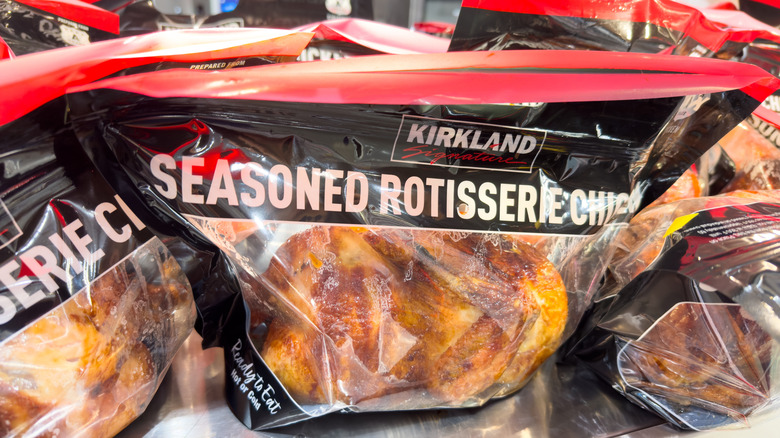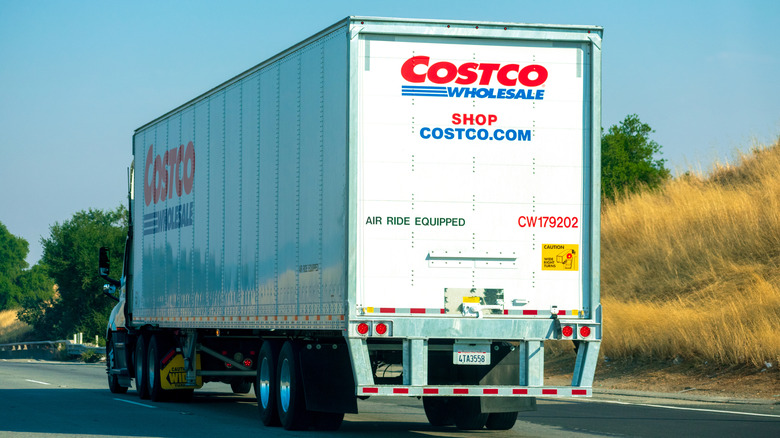Here's Where Costco Sources Its Beloved Rotisserie Chickens
You can only really count on a few things in life: death, taxes, and $4.99 rotisserie chickens from Costco. Despite selling over 137 million chickens in 2023, Costco's supply chain doesn't look to be buckling under the ever-increasing demand. In fact, the membership-only wholesale behemoth has developed a novel way of keeping its hot case stocked and fresh.
Since launching its famous Kirkland-branded rotisserie chicken in 1994, Costco has historically outsourced production of its broilers to major poultry companies like Tyson. However, in 2016 Costco shook the industry with plans to build its own massive chicken processing facility in Fremont, Nebraska, to reduce reliance on external suppliers. This announcement came after a major falling out with Tyson, which Costco accused of price gouging between 2008 and 2019.
The move is what the business world calls vertical integration. In plain English, Costco cuts out the middleman and owns everything in the supply chain from farm to shelf. That said, Costco's poultry facility was only designed to supply about 40% of the retailer's total chicken demand (roughly equivalent to the total demand of the western half of the U.S.). Indeed, despite the whole price gouging thing, Costco still contracts with major producers like Tyson, Pilgrim's Pride, and Foster Farms for the rest.
How Costco inflation-proofs its rotisserie chicken
If you've ever wondered how Costco can afford to maintain prices from more than 30 years ago, the answer is layered. Those $4.99 chickens and $1.50 drink and hot dog combos are "loss leaders" that lose the company money but, more importantly, lure customers in droves through the front door. Costco's Fremont poultry facility, which created hundreds of jobs for Nebraskans when it was completed in 2019, plays into this strategy in two ways. First, it lessens the sting of losing money on each rotisserie chicken. Simply put, Costco controls the costs of every step of production while cutting out middlemen. If there's any inefficiency in the system, the company can take unilateral action to correct it.
Second, and more importantly, it addresses the shortage of smaller whole chickens that major poultry companies have been steadily moving away from. The shortage comes from simple economics: Chicken parts like breasts and drumsticks are in far greater demand than whole birds, so big companies like Tyson prioritize raising larger birds for more substantial parts. Rather than letting its most famous loss leader slowly vanish from the market, Costco has taken matters into its own hands to ensure the supply remains steady despite broader market trends.
This is certainly a power play and has undoubtedly provided Americans with a reliable, seemingly inflation-proof source of chicken dinners amidst economic uncertainty. Lucky for Costco, demand is unlikely to die down so long as the price remains right.

